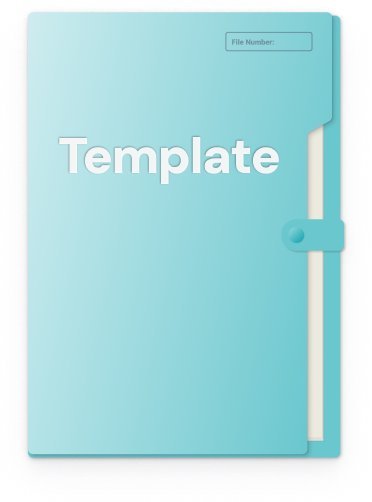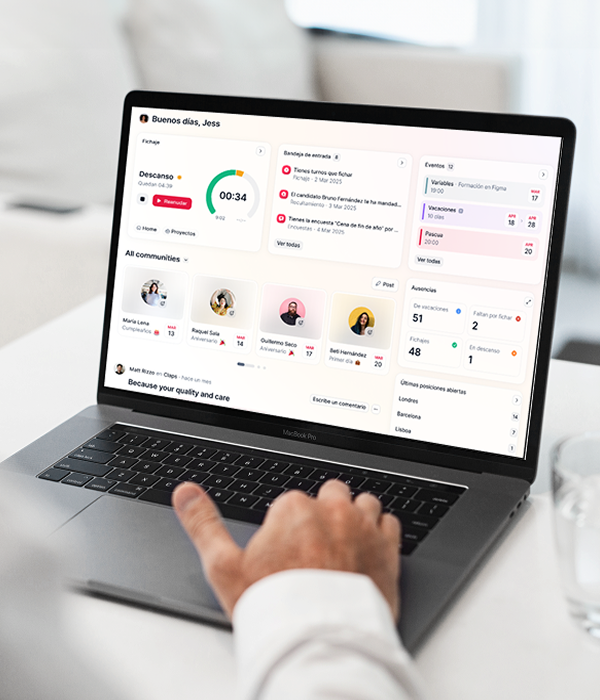As organisations continue to grow and evolve, conducting periodic audits of various departments and processes becomes increasingly important, especially within human resources. Conducting a regular HR audit can help identify areas of improvement, ensure compliance with regulations, and ultimately improve the department’s overall effectiveness. This article will outline the steps involved in conducting an HR audit and the importance of using an HR audit checklist to ensure you’ve covered all bases.
Download our free HR audit checklist to streamline your audit process.
HR Audit Overview
HR audits are self-evaluations that uncovers your HR team’s functions and efficiencies. By conducting HR audits, you’re proactively ensuring compliance with regulations and avoiding exposing your company to legal risk or hefty fines. Typically, HR audits will analyse current processes and understand if your company’s training, onboarding and recruitment workflows are up to date. This includes analysing if your core processes are meeting your current and future needs. Additionally, these audits serve to shed some light on essential HR metrics like turnover rate and time to hire. This way, you have the big picture of how effectively your HR team is performing and if they aligned with your organisation’s goals.
Ultimately, having a clear HR audit process will give you valuable insights into your company’s overall performance and helps you find areas of improvement. By utilising templates or software will simplify your HR audit process and give structure to your inspection.
Benefits of HR Audits
It can be easy to get caught up in the hamster wheel of daily tasks and push back projects with longer-term benefits like HR audits. However, a human resources audit can improve the efficiency of those day-to-day processes, saving you time in the long run.
Whether the focus lies on policies or performance, a yearly review of your HR uncovers problems and challenges that exist within the department. Evaluating these issues allows your company to improve and reduces the risk of litigations. It will also positively affect employer brand as your workforce and potential candidates will see you taking an active role in bettering working conditions. An HR audit process can also have the following impacts.
Keep you compliant
Lawsuits are a significant fear for any HR team, especially considering that employment laws are constantly evolving. An HR audit ensures you have up-to-date policies in line with legal frameworks like GDPR and labor laws, helping you avoid penalties and litigation risks.
Refine office policies
An HR audit means holding up a magnifying glass to the processes and workplace policies that directly impact your employees, raising an opportunity to improve the employee experience and employee safety. Bettering company policies and clarifying your employee handbook will help to attract and retain top talent.
Create an opportunity to collect data
To carry out an HR audit, you’ll need to gather data on HR performance and the overall HR function. This can help HR departments to identify areas they may have overlooked and make their planning more strategic.
Using an HR audit checklist gives you a place to record and centralise this. People teams in the UK seem to already be aware of the importance of metrics; research has shown that UK companies are more likely to gather and utilise people data compared to many other European countries.
Improve financial fairness
During a typical HR audit, compensation and benefits come under the microscope. This will allow HR professionals to evaluate average salary and ensure employees are compensated fairly.
Reveal HR inefficiencies
A WorkFront ‘State of Work’ survey revealed that UK employees spend less than half of their time actually working due to “unproductive activities and misapplied technologies”. Most respondents reported ‘lack of standard processes’ as a top reason.
A yearly review of HR processes can help address inefficiencies, such as fragmented systems, by recommending streamlined tools and more efficient workflows. A common inefficiency faced by companies nationwide is the need for employees to access multiple different HR systems. In fact, 37% of companies ask their workers to use 6-10 separate ones!
Boost company culture
Part of employee well-being is rooted in how much they feel they are being valued. When employees see their company leaders paying attention to the needs of current employees and how to improve their day-to-day, it can strengthen company culture and your organisational reputation.

Planning an HR Audit
Although there are many different ways in which companies can utilise HR audits, most assessments follow the same structure. The human resource audit consists of three parts:
Pre-audit
During this phase, you will have to collect data. This information can be quantitative or qualitative, depending on the point of interest.
Data analysis
Here you will assess the relevant information such as processes, procedures, policies, documents, and data.
Reporting
This should contain your findings and recommendations which will help improve the Human Resources function as best as possible.
Considering the time and effort you need to invest in a full-scale assessment, performing one human resource audit yearly is advisable. When you make an assessment, you can choose to focus on the following areas:
- Recruitment and hiring practices
- Onboarding
- Management
- Training and Development
- Employee Relations
- Performance
- Strategic Planning
- Documentation
- Best Practices
- Compliance with Laws and Regulations.
You might also want to look into an HRIS. An HR reporting tool like Factorial allows you to gather deep insights on each of these organisational aspects in one place. This allows you to make well-informed, data-based decisions regarding your organisation.
How to Carry Out an HR Audit
Organisations should be realistic when it comes to how long their HR audit process will take. HR teams must commit sufficient time and attention to audit checks to get into the nitty-gritty of each HR process. Starting with an HR audit checklist provides a framework for your review and keeps a written record of findings and changes to support further audits down the line.
Here are a few crucial steps to follow when carrying out your own audit:
Step 1: Establish the Purpose and Scope of the Audit
Before beginning an HR audit, it is essential to establish the objective of the audit. The purpose of the audit should align with the organisation’s overall goals and objectives. For example, the audit may be conducted to identify areas of improvement in the performance appraisal process, employee retention, employee benefits, or any other area human resources are responsible for.
The audit scope should be clearly defined, and the areas to be audited should be identified. These may include HR policies and procedures, employee files, compensation and benefits, employee training and development, and compliance with UK employment laws.
At this point, you should also create a timeline with milestones – remember to regularly check in on this and hold people accountable for their assigned areas!
Step 2: Gather Information
The next step is to gather information about the HR department and its processes. This information can be obtained through interviews with HR staff, review of HR policies and procedures, and examination of employee files and other relevant documents. An HR software can support you here as employee data and KPIs related to your workforce can all be accessed from one place.
Use an HR audit checklist to remind you of the details you need to collate and centralise the data you collect.
Step 3: Analyse the Information
Once the data has been gathered, it is time to dissect it! The analysis should focus on identifying areas of strength and weakness within the HR department. This may include identifying areas where company policies need to be updated, areas where compliance issues exist, and areas where employee satisfaction can be improved.

Step 4: Develop an Action Plan
Based on the analysis results, an action plan should be created. The action plan should prioritise the areas that need to be addressed and identify the steps that need to be taken to improve the HR department. It should also include timelines and responsible parties for each step; accountability is key to the progress of a review!
Step 5: Implement the Action Plan
The final step is put everything into practise! This may involve updating procedures, training HR staff, and improving communication with employees. It is important to monitor progress and make adjustments as necessary.
HR Audit Checklist Template
Using a checklist will help you to stay organised and efficient throughout the auditing process. This list contains detailed questions that apply to the different areas of HR and is typically a couple of pages long. You can make it easier to complete by dividing the audit into smaller assessments and questions. It’s up to you whether you want to use a “yes” or “no” format to answer the questions or allow a more detailed answer.
Our HR audit checklist template provides a solid starting point for your review. It specifically focuses on onboarding, recruitment, and HR management – three areas that directly impact employee relations and HR professionals daily!
Digitalise your HR Audit Process with Factorial
If you’re looking for a digital solution, Factorial’s all-in-one business management platform is the tool for you. It centralises your employee data and provides real-time insights to make conducting HR audits faster and more accurate. Rather than juggling multiple spreadsheets, checklists and templates – you can access everything you need in one place. Fortunately, with Factorial, you can receive automated reminders to update policies or review workflows, making your team audit-ready year-round. Transform your HR audit process from a dreaded annual task to a strategic and streamlined process that drives growth. Book a demo with an HR consultant to see how Factorial can simplify your next HR audit.



